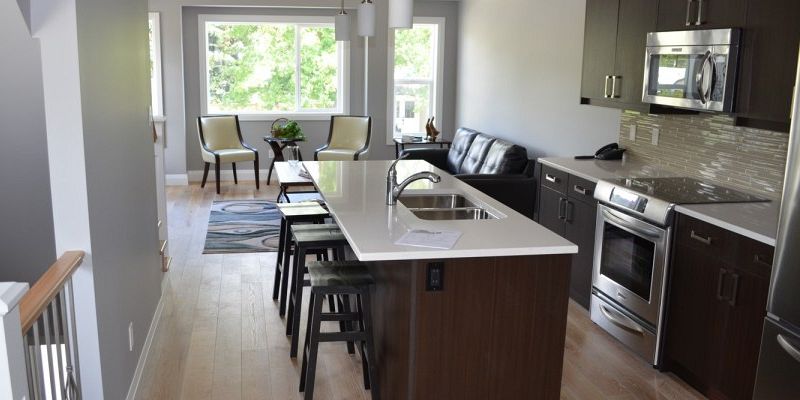Hardwood floors is a great choice that can add tremendous value to your home when properly maintained. Here in Kelowna and throughout the Okanagan, hardwood floors are subject to a wide variety of tough environmental conditions. During the summer and fall it is usually very hot and dry and during the winter and spring it is often cool and humid. Our installers will make sure that your new hardwood floor is acclimated prior to installation, but it’s important for homeowners to understand the maintenance requirements of their floor in order to protect their investment and keep it looking great for many years. The single most important aspect of maintaining a hardwood floor is to maintain a proper environment within your home.
Hardwood and Moisture
Wood is hygroscopic, which means that it will gain and lose moisture depending on the temperature and humidity of the surrounding air. Changes to these conditions can wreak havoc on hardwood flooring by causing it to expand or contract as it absorbs or releases moisture. These forces can result in problems such as cupping (where the outer edges of each plank are raised up), crowning (where the interior of each plank is raised up), gaping (where spaces appear between each row of boards), checking (where splits appear down the length of each board), delamination (where the veneers of engineered floors separate from the core), and even noise (where walking on the floor causes unusual squeaks, crunching, or popping sounds).
Hygrometers
Fortunately, moisture problems are easy to avoid and early detection of problems can help mitigate major damage to the floor. We recommend that every hardwood customer purchase a hygrometer and periodically check that conditions are inline with the manufacturer’s recommendations. These are inexpensive devices that look like a small clock and will display the room’s relative humidity. Most hardwood floors call for an environment with a relative humidity between 30% and 50% and a temperature between 60 and 80 degrees Fahrenheit.
There is a common believe in the flooring business that “hardwood manufacturers require homeowners to have a humidifier for warranty purposes” and that “hardwood manufacturers choose to manufacture their product this way”. The reality is that these numbers actually originate from us, homeowners as human beings. Consider that our bodies generally hate living in an environment below 30 percent relative humidity. We get dry skin and nose bleeds. If you’re a parent, you can probably remember setting up a portable humidifier in your child’s room when he or she had a stuffy nose. We also hate living in environments with above 50 percent relative humidity. We may love the sun, but we hate feeling sweaty and blast the air conditioning on hot summer days. As such, it makes perfect sense that manufacturers would create products that perform best in the environments we are most comfortable with. They do this by kiln drying their products until the moisture content of the wood coincides to the conditions we find comfortable.
Humidifiers
Of course, we live in a desert and most of the time a lack of humidity is our biggest concern. A humidifier can be used to add moisture to the air in dry climates and, obviously, a dehumidifier can be used to remove moisture from the air in wet climates. Ideally, these units should be electronically controlled and installed into the home’s HVAC system. Portable units can help during extreme periods, however they are often insufficient for whole house use. These systems usually quite affordable, especially when compared to the cost of replacing a problem floor.
If you have questions or need more information, please stop by our showroom at 3460 Fleet Court, across from Kelowna International Airport.


